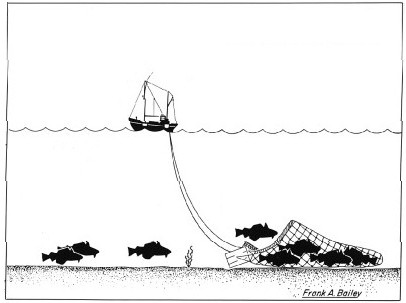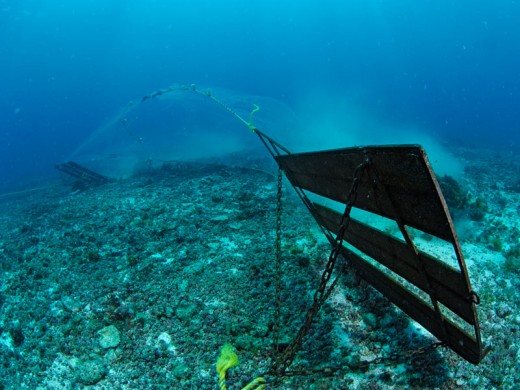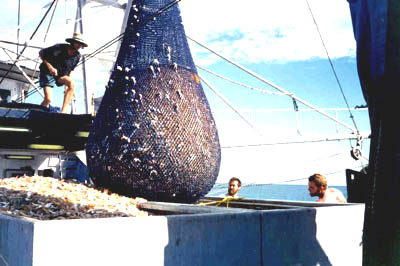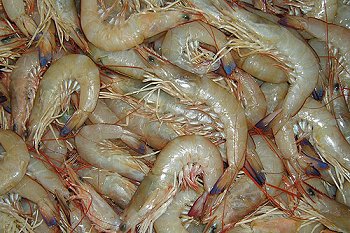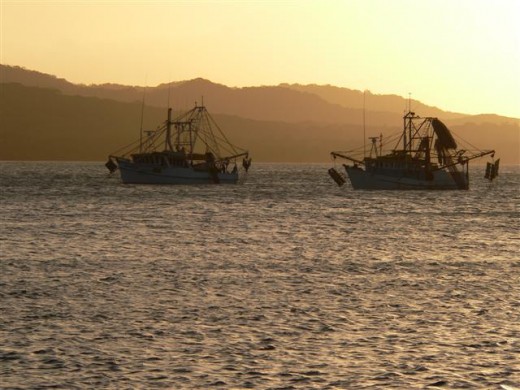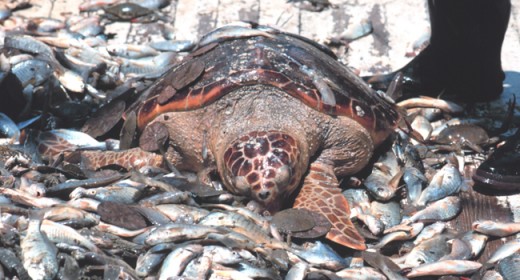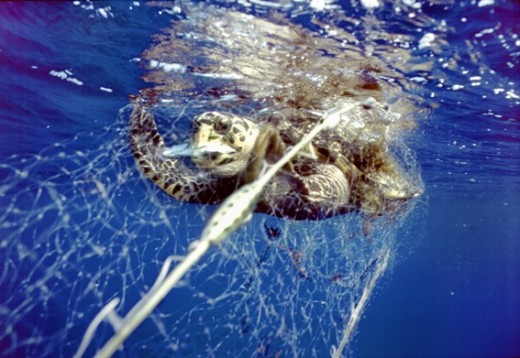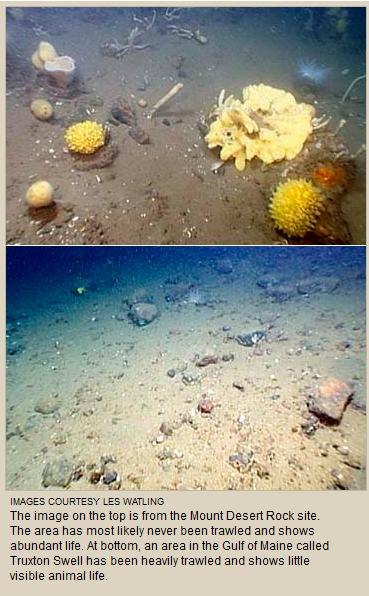Queensland marine life raked to extinction
Thursday, August 4th, 2011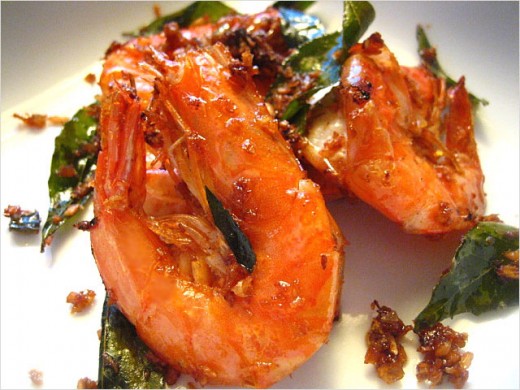 Prawns – an Australian favourite dish
Prawns – an Australian favourite dish[Source: http://rasamalaysia.com/butter-prawns/]
.
Back in 1987 at the formative age of 23, the author worked ten days as a deck hand aboard a prawn trawler off the coast of Townsville in northern Queensland.
Those ten days formed the basis of what would contribute invaluably toward ultimately obtaining a year’s inshore sea time to qualify as a licensed commercial coxswain. But those ten days are also vividly recalled of the experience of the work of a prawn trawler. For those ten days aboard the comparatively small 9.8 metre diesel trawler ‘Charada‘, Frank the skipper, his first mate and I trolled the sea floor along the north Queensland coastline between Townsville and Cape Bowling Green.
My Record of Service log confirms this, as my memory of twenty four years ago is not that acute. My log shows that I later went on to work as a deckhand aboard mainly commercial tourist vessels after that. So my only commercial fishing experience was that short stint aboard the Charada.
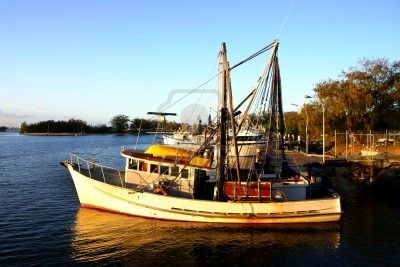 A prawn trawler similar to the ‘Charada’
A prawn trawler similar to the ‘Charada’
.
However, my memory remains vivid of the nightly three shifts we worked, commencing respectively at 9pm, midnight and 3am – hauling in the prawn catch after trawling the sea floor for three hours at a time.
But after tugging the net’s cod end knot, it was not just prawns that ended up on deck’s sorting tray. Everything that lived along the sea floor was dragged into the net by the heavy chain that raked the sandy seabed.
[Source: http://marksecology.blogspot.com/2011/04/big-fish-review-part-2.html].
I recall the variety of creatures that were in the net, the fish, bugs, squids, the odd sting ray, sea snake and the sea urchins and marine sponges. I recall one occasion when the skipper had had to shoot a shark with his .303 which had got caught up in the net. I recall the marine sponges the most because of their strong seaweed like stench, and it was this stench in particular that caused me, a Victorian landlubber up until then, to become queasy. I was sea sick by the smell more so than the motion of the boat. I didn’t generally get sea sick.
For those ten days on that small trawler for three shifts a night, we raked the seabed of its marine life. We only wanted the banana prawns which we sorted into white plastic tubs, covered with ice and snap frozen in the freezer down below. The rest of the smelly marine creatures we tossed back overboard – dead.
I recall watching the depth sounder next to the boat’s wheel, displaying the colourful array of marine life activity (prawns).
But then later in the trip there were no colours, just a blank screen, so we headed back to Townsville. The sea bed was just sand after our chain had dragged and raked the sea bottom. Nothing was left alive.
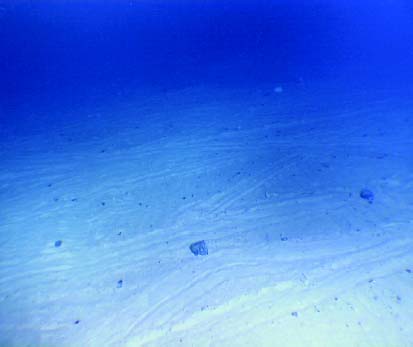 Typical sea bed after trawling
Typical sea bed after trawling
Though hard manual labour and night shifts, the whole trawling process was pretty straight forward – head out to sea, throw the net over, trawl for three hours, haul in, sort the prawns from the rest, freeze ’em, then after the freezer was full head back in sell ’em and go to the pub. A simple life.
That was my brief introduction to Queensland prawn trawling. Yet looking back, the Charada was just one of hundreds of prawn trawlers that plied the Queensland coastline. It was just ten days out of many years and decades of similar fishermen doing their trade since perhaps the 19th Century. One must consider then how can there be any marine life left in Queensland inside the Great Barrier Reef? At the age of twenty three I just accepted that trawling was a normal legitimate Queensland industry. I hadn’t considered the environmental impact at the time. The work was there.
.
.
For years the Queensland Fisheries Service (QFS) has assured that commercial prawn trawling has met strict environmental guidelines. This has supported the prawn industry continuing to earn lucrative revenues from both domestic and export markets. This has been reassuring, after all the World Heritage listed Great Barrier Reef is not far away.
In 2005, Queensland’s Fisheries Research and Development Corporation (FRDC) and Fisheries Queensland jointly funded a marine research project called ‘Reducing the impact of Queensland’s trawl fisheries on protected sea‘. This research project measured the incidental catch and fishing mortality of sea snakes in the Queensland trawl fishery.
By 2008, the project had concluded that about 105,000 sea snakes were being caught annually in the fishery, with about 26% dying as a result. The effect of bycatch reduction devices (BRDs) on the catch rates of sea snakes and prawns was also evaluated, as part of the project. One BRD in particular, known as the fisheye BRD, was highly effective at excluding sea snakes from trawl nets, with no reduction in prawn catch rates. As a result of the project, trawler operators are now being encouraged to install fisheye BRDs in their nets to reduce their impacts on these protected snakes.’
[Source: Queensland Department of Primary Industries and Fisheries, ^http://www.dpi.qld.gov.au/28_5193.htm ] Example of sea snakes caught in catch ..
.
So all that unwanted marine life we had been throwing overboard the Charada was officially termed ‘bycatch‘. Sea snakes are protected species in Australia and therefore measures need to be implemented to minimise commercial fishing impacts on them, plus the many other bycatch that may happened to be threatened and endangered.
.
.
Then yesterday The Queensland Times reported the following article:
.
‘Net fishing damaging marine life’
.
.
‘Trawler fishing is devastating slow growing marine life and damaging Australia’s oceans, a new report has found.
The study by environmental consultancy J Diversity has found that seafloor fishing and gill netting is “indiscriminate” in its impact on marine life.
Less than five per cent of Australian waters are protected from fishing and mining. It found in the south-west marine region gill nets up to eight kilometres wide are decimating shark and ray species.
NT Environment Centre director Stuart Blanch said the practice of trawling is as destructive as the clear-felling of forests on land and “death nets” must not further damage feeding and breeding areas for marine life.
“Trawling is one of most indiscriminate fishing methods. It produces only two per cent of wild fish harvest but up to one third of its bycatch,” Dr Blanch said.
The report says the WA South Coast Shark Fishery and Great Australian Bight Trawl Fishery catch at least 34 and 50 shark and ray species but discard around one third of the catch. It also says most Australian stocks have been fished to between 20 to 40 per cent of their unfished biomass, below the threshold of 75 per cent recommended by scientists to ensure fish stocks are conserved. Gavan McFadzean from The Wilderness Society called on federal Environment Minister Tony Burke to rule out any move that would benefit seafloor trawling or gill net fishing in new marine sanctuaries.
“If the Minister allows these death nets into important feeding and breeding areas, he would undermine the government’s election commitment to improve protection of our marine life,” he said.
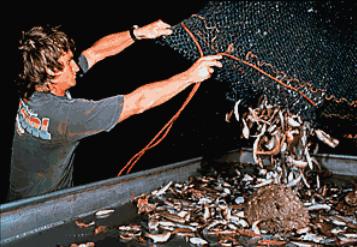 Brings back memories of my ten days on the prawn trawler
Brings back memories of my ten days on the prawn trawler
.
.
Back in 1987, at age 23 I was clearly naive about what I was involved in, but governments and fisheries cannot feign naivety.
.
Yesterday’s response comment by ‘Atrax’ from Maroochydore is apt:
.
“Gees it took a new megabucks report to tell you this?
We sure have some geniuses in the Australian Marine management departments.
Of course it damages marine habitat and spawning sites.
This has only been known for the last 50 years, they banned Scallop dredging in Port Phillip bay because of this 35 years ago.
The bycatch destroyed in purse seine and gill netting is mind blowing.
Just shows how useless the drones in these departments really are.”
.
.
‘Satellite images reveal trawling damage’
.
.
‘Bottom trawling, a fishing practice that involves dragging a net along the seabed behind a boat, causes extensive damage that can even be seen from space, a Hawaii scientist reports.
“There is a massive amount of mud that gets kicked up,” said Les Watling, a professor of zoology at the University of Hawaii.
He joined other scientists in a presentation on the problem last week in Boston at the annual meeting of the American Association for the Advancement of Science.
Trawling is not a problem in the deep waters around Hawaii, since the method is used in waters less than about a mile deep, but areas where it is used sustain a significant loss of marine life, he said. “It does more harm to the sea floor than any other kind of fishing, and now we have images from space showing how much sediment it lofts into the water column,” added Elliot Norse, president of Marine Conservation Biology Institute.
A University of Hawaii zoologist is among a group of scientists decrying the destructive effects of bottom trawling, a type of fishing, visible in satellite images from space. “We’re hoping that people will have a look,” said Les Watling, a professor of zoology at the University of Hawaii. “There is a massive amount of mud that gets kicked up.”
The satellite images of mud trails kicked up by bottom trawling are available on the Web site www.skytruth.org, inside the gallery and labeled as “trawling impacts.”
Watling, who has been working for about 15 years on limiting the effects of trawling, added that 99 percent of the areas that are trawled cannot be seen by a satellite. He was a panelist in a session that discussed the effects from bottom trawling at the annual meeting of the American Association for the Advancement of Science this month in Boston. Since trawling cannot be done in waters deeper than 6,500 feet, it is not a problem around Hawaii, but in areas where it is used, there is usually a significant loss of marine life, scientists say. Trawling equipment can be about 150 feet across and weigh half a ton. In its wake the trawling nets leave nothing but rubble, killing sponges and coral on the sea floor. Bottom trawling is used to catch shrimp and other bottom fish such as cod.
“Trawling removes much of the life from the sea floor,” said Elliot Norse, president of Marine Conservation Biology Institute, who participated in the session.
.
“The effect is basically to denude the sea floor.”
.
He said bottom trawling catches more unwanted fish and does more harm to the sea floor than any other kind of fishing. The sediment disturbing the water column can also clog fish gills, possibly reintroduce absorbed carbon into the water and kick up toxic materials that have settled to the bottom, Norse said.
“Now we have images from space showing how much sediment it lofts into the water column,” he said. “Not just affecting the sea floor, it also affects the water column.”
Ten years ago, Norse and Watling completed a study that found bottom trawling covers an area the size of the continental United States every year. John Amos, president of skytruth.org, used the detail in satellite images from Google Earth to discern the fishing vessels creating the squiggly sediment trails from bottom trawling. He gathered satellite images from the U.S. Geological Survey of fishers using bottom trawling in the Gulf of Mexico and China.
“I think that what’s exciting about this imagery is it’s one of the few examples where we can provide people with visual truth of what we’re doing to the oceans,” Amos said. “Imagery from space can actually show what we’re doing to the bottom of the ocean floor. When you show people images they understand, they get it in ways that thousands of pages of reports doesn’t quite communicate.”
.
– end of article –
.
.

